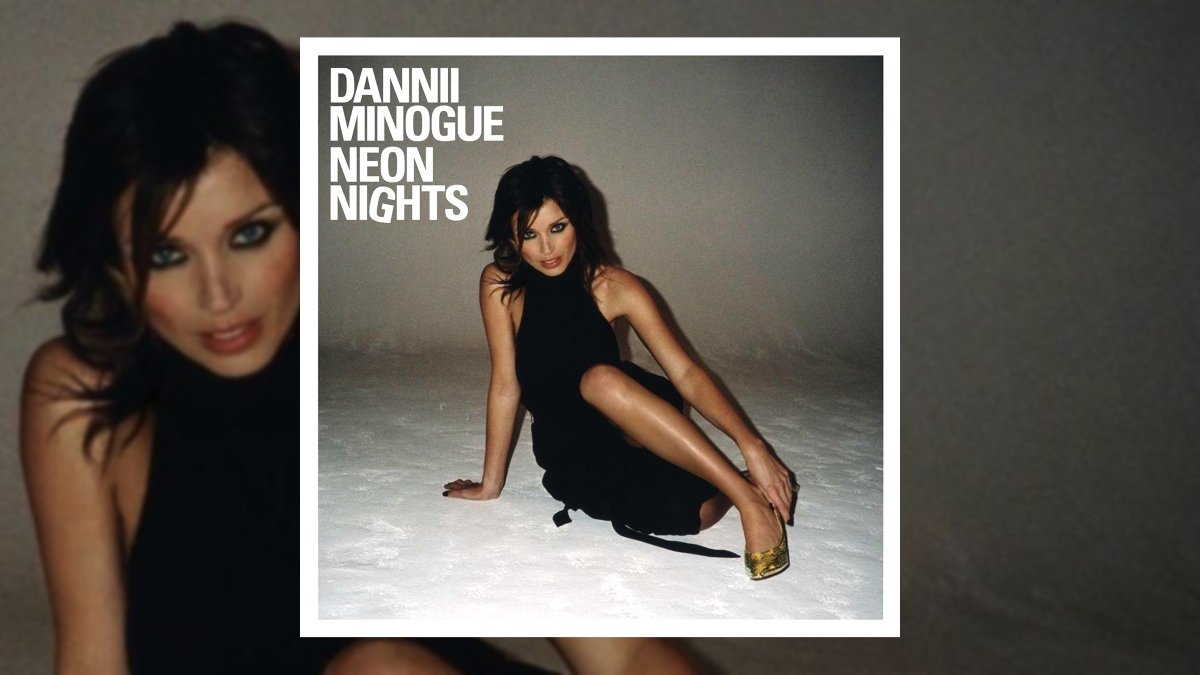Happy 20th Anniversary to Dannii Minogue’s fourth studio album Neon Nights, originally released March 17, 2003.
At the time of its release in 1997, Girl presented Australian vocalist Dannii Minogue in top form. An energizing mix of dance and pop, her third studio album was meant to reposition Minogue commercially and critically. Though its reviews were promising, its sales were tepid. Still, Girl gave the singer many opportunities, touring and otherwise.
One such opportunity presented itself to Minogue in 2001. Approached by the Dutch disc jockey duo Zki and Dobri, also known collectively as Riva, Minogue was invited to provide vocals for a hot and heavy dancefloor track they had put together. Minogue took the gentlemen up on their offer and “Who Do You Love Now?” followed shortly thereafter in that same year. Audiences in Europe and beyond, both mainstream and underground, went crazy for the track.
Minogue's partnership with Riva was, without a doubt, enduring proof of her credibility—and marketability—in dance music circles. Minogue could have stayed comfortably nestled in that environment, but she was ready for the next step. With an acute working knowledge of dance genre principles cultivated over three albums, Minogue sought to plot a record that could bring these components together—but with a pop perspective.
Not long after “Who Do You Love Now?,” brainstorming for Neon Nights, Minogue's fourth studio long player, had gone into high gear. On Girl, the force behind its power was personal, but ironically, Minogue had relinquished its content construction to her creative team. Neon Nights saw Minogue put her hands back into shaping the songs, which were daring, indulging a side of Minogue that had previously only peeked around the corner of certain selections in her canon for those paying attention.
Now, given an entire album to express itself, this area of Minogue's performance psyche embraced the totality of her ego and her sexuality. She would wield these two aspects of herself through the album's assembled material. The songwriting and production personnel—notables including Ian Masterson, Terry Ronald, Hannah Robinson, Savan Kotecha, Henrik Korpi, Matthias “Blackcell” Johansson, Karen Poole and Jean-Claude Ades—were pivotal in working with Minogue to draft canvases suitable for this persona to come to life.
Neon Nights is a retro-contemporaneous fantasia, showcasing Minogue's encyclopedic awareness of dance music devices to incredible effect. Euro-disco, in a juicy assortment of colors and flavors, displays itself on “I Begin to Wonder” and “Come and Get It,” the latter a sly hidden track within the album's closing piece, the lone cool down number, “It Won't Work Out.” Minogue's enduring fascination with American aestheticism, as politely harvested from electro-funk, R&B and hip-hop origins, are accounted for on “Put the Needle on It” and “Creep.”
Listen/Watch (Playlist):
And while there are plenty of original sonics to feast upon here, Minogue's love of previously established jams is not disguised on Neon Nights. From the mesmeric interpolations of funk/jazz maestro Tom Browne's “Thighs High (Grip Your Hips and Move)” (on “Mighty Fine”) and avant garde futurists Laidback's “White Horse” (on “Push”), Minogue's tastes are first-rate.
Minogue, ensconced within her record's glowing rhythms and grooves, enjoyed her club siren transformation. The set's verses, bridges and hooks are dressed to the nines on “For the Record” and “Don't Wanna Lose This Feeling,” affirming Minogue's ability to integrate the finer points of pop lyricism into discothèque oriented song structures. Collectively recalling the floor filling vibes of Ibiza, London and New York City—in either 1985 or 2002—Neon Nights was ready to take club culture to the general public like never before.
Racking up three hits—“Put the Needle on It,” “I Begin to Wonder,” “Don't Wanna Lose This Feeling”—Neon Nights achieved gold certification in the United Kingdom. Sweetening her chart jackpot was the LP's critical consensus. Almost unanimously, the music press showed support in their assessment of Neon Nights as Minogue's breakout moment. Neon Nights was gorgeously reissued in 2007, packaged with a bountiful supply of B-sides, outtakes and remixes.
Twenty years later, Neon Nights remains a distinct dance-pop marker, its influence apparent to the discerning ear. Nowhere else could one come in contact with such a glamorously assembled gaggle of influences that cross decades and sounds to unite the hedonism of the dance floor with the accessibility of pop radio.
LISTEN:
Editor's note: this anniversary tribute was originally published in 2018 and has since been edited for accuracy and timeliness.

